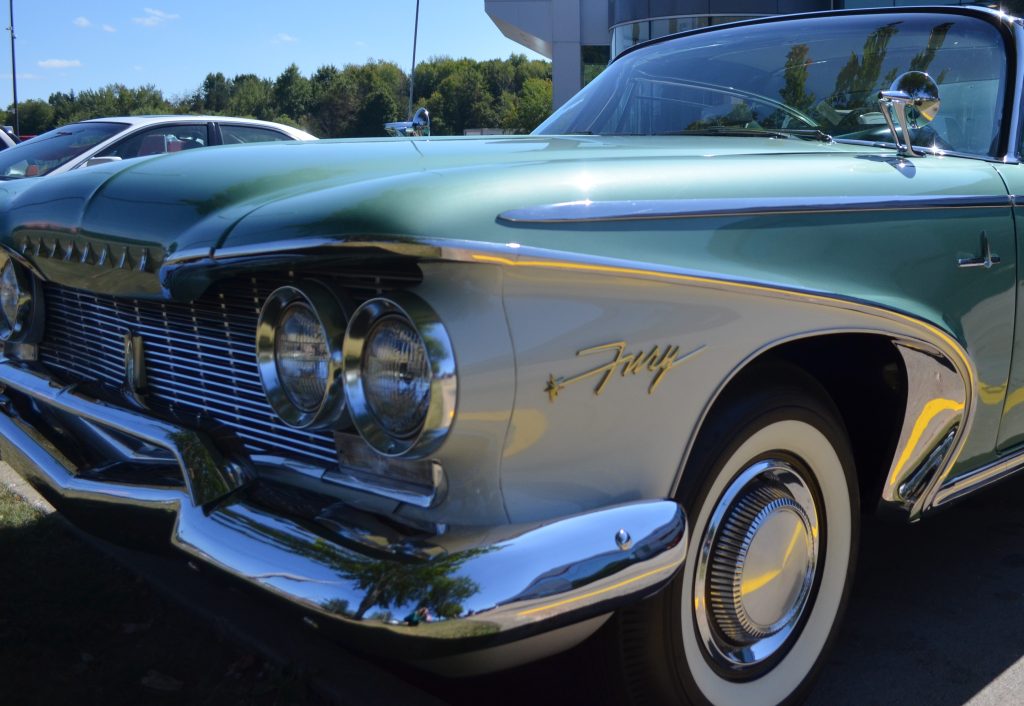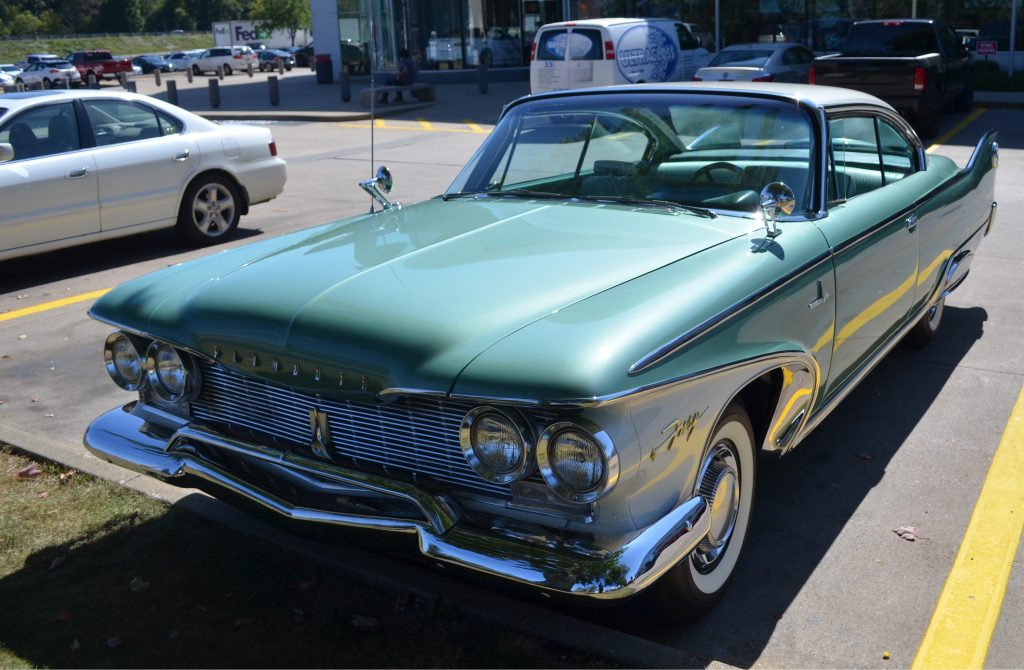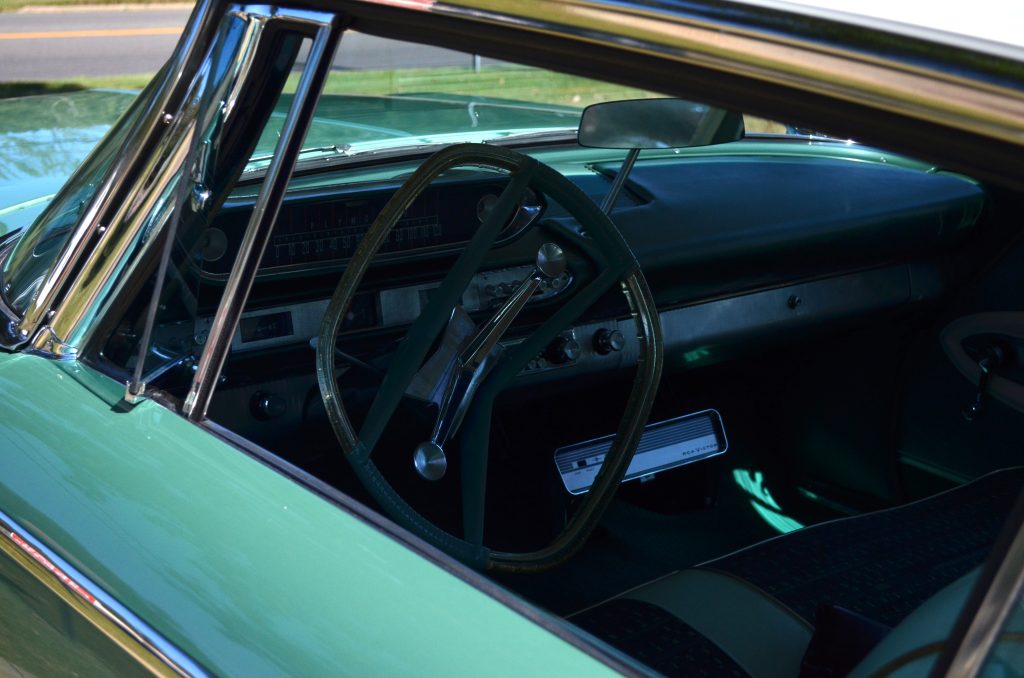Do you love cruising down the road, windows down, with a nice playlist of jams filling the air?
From Wolfgang to Waylon, The Beatles to Beastie Boys, we do too—which is why we figured you’d dig today’s Lot Shots feature.
We’ll explain why in a sec, but first a little history, because thanks to a certain autumn red Plymouth Fury, we think these cars have gotten a bad rap.
After all, the Fury nameplate continued into the early 1980s, with only one bloodthirsty rampage over its 20+ year production run—hey, that’s pretty good in our book.

The Fury began life as a sub-model to the Plymouth Belvedere back in 1956, adding some style upgrades and a mandatory V8 engine (a 318 version of the Chrysler “A” engine to be precise).
It broke off into its own model series in 1959 and, in 1960, the Fury got a complete refresh.
And that’s precisely what we have here. These second-gen. Furys only lasted from 1960 to 1961, and this one wears the distinct grille of the 1960 models.
More importantly, 1960 Mopars are very, very easy to spot thanks to the two prominent tailfins—the 1961 passenger car line didn’t get those, instead opting for a flattened rear deck profile as the finned car fad slowly faded away.

1960 also heralded some big updates from Ma Mopar. These cars were no longer body-on-frame and instead boasted unibody construction.
Perhaps more importantly, this year saw the introduction of the legendary “Leaning Tower of Power” Slant Six that would eventually be found across a vast lineup of Mopar cars and trucks. The Six came in 225ci flavor, and it joined a robust lineup of Chrysler V8s, including the aforementioned 318ci A block, along with 361 and 383 cubic inch “B” blocks.
The Fury entered its third generation after 1961, where it shrunk down to become Plymouth’s midsize offering—before being upsized again in another major refresh in 1965…and then back to a midsize in 1975.
The nameplate would solider on into the 1980s as a derivative “Gran Fury” full size model.

This particular Fury we spotted in the Summit Racing retail store parking lot a while back is a fine example of the breed, wearing what we think is original Rinshed-Mason “Chrome Green Iridescent” paint atop a super-straight body.
But our favorite feature of this car appeared as we peeked inside. Take a close look under the dash and you’ll spot a 45 record player(!), made by RCA-Victor. This was a FACTORY(!!) option from Plymouth in 1960 and it’s super rare to find one of these still around in its native environment.

Sold under RCA-Victor model number AP-1, this under-dash record player was essentially mounted upside down, relative to a traditional turntable. The tonearm held the headshell/cartridge underneath the record, with the stylus pointed up to make contact with the “bottom” of the 45.
When the record was over (or manually advanced) the tonearm swung out of the way, a retaining pin inside the center shaft retracted, and the old record would drop down onto the discharge stack. The tonearm would then swing back, ready to play the next gravity-fed record.
In practice, you simply load about a dozen or so records onto the spindle from below the unit, and the changer mechanism will automatically move to the next record when the current one was done.
Considering your average 45 rpm record held a three-minute song back in 1960, it meant that you could get around 30 to 45 minutes of cruising tunes from one of these babies.

Representing one of the finest (and last) examples of tail fins, and with a trusty 225 Slant Six available under the hood, the 1960 Fury is truly worthy of appreciation—and a welcome reminder that the Fury’s legacy extends well beyond its villainous literary persona.
More importantly, with an AP-1 record player under that dash, we couldn’t think of a better road trip car. After all, old 45s are readily available nowadays, which means a trip to your local record store would likely result in miles and miles of jams.
…Provided the road was smooth enough, of course!

I have the RCA record player from 1960 plymouth for sale .from my plymouth.and some 45 records.